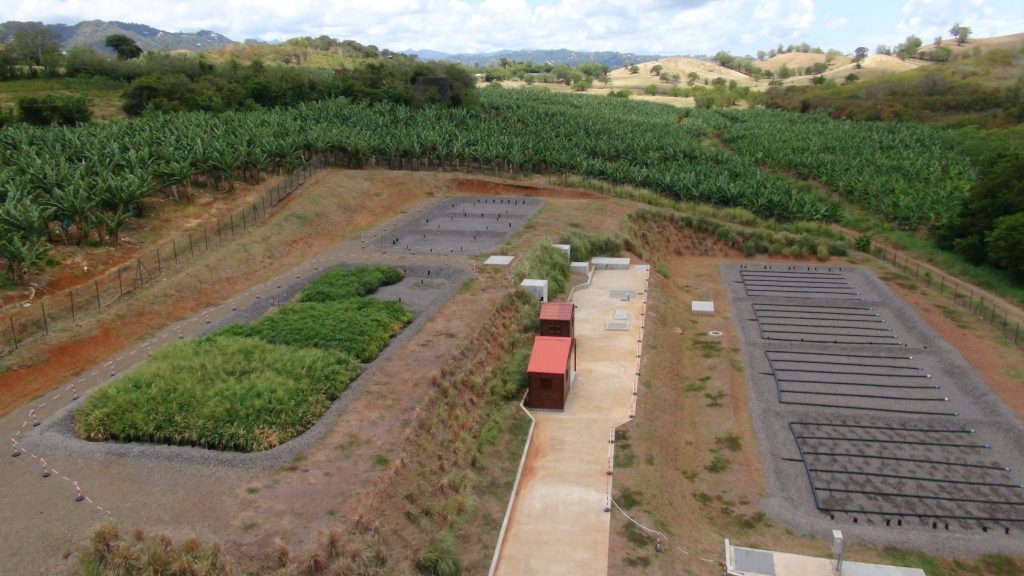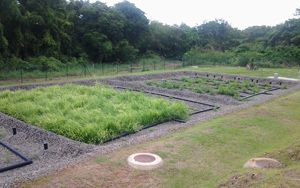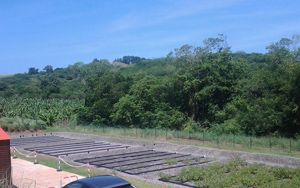An Original Approach Inspired by Wetland Ecosystems
Planted vegetative filters draw inspiration from the natural purifying abilities of wetland ecosystems. It was during this time that Cemagref (renamed Irstea in 2011) initiated experiments inspired by these treatment principles to establish the sizing rules for what would become the French system. Its uniqueness lies in simultaneously treating wastewater, solid materials, and sludge generated by the treatment in the same system, with vertical, aerobic flow, producing compost that is valuable for agriculture.
A Project Rooted in Local Realities
The Overseas Departments and Territories (DOM) bear particularly sensitive challenges in sanitation: they contain 80% of the national biodiversity on 14% of the territory (ecological and economic (tourism) challenges), and face strong constraints that can hinder the development of sanitation at the local level: remoteness (access to materials), rapid population growth (INSEE) (land pressure), fragile economic situation (Richez N., 2011), and climatic factors (development of H2S in networks, rainy weather). This observation leads to advocating for the development of robust treatment systems capable of adapting to variations in hydraulic and organic loads, using locally available, economical, easy-to-manage, and high-performing materials.
The ATTENTIVE Project
The ATTENTIVE project (Wastewater Sanitation Adapted to the Tropical Context through Extensive Treatment Using Vegetation – Assainissement des eaux usées adaptées au contexte Tropical par Traitement ExTensifs uTilIsant des VEgetaux in french) was originally created in response to the 2011 call for projects from the MEDDE within the framework of the national biodiversity strategy. The project focuses on the Caribbean region (Martinique and Guadeloupe) due to a more mature context. The objective is not only to meet ERU and DCE objectives by developing innovative ecological stations adapted to the climate and socioeconomic context, but also to implement the conditions for the generalization of these systems autonomously.
The project was structured around 3 axes:
- Technical, by validating compact systems, using local and non-invasive plants, local materials, capable of treating both water and sludge at different rejection levels (carbon treatment, nitrification, denitrification).
- Operational transfer, both technical expertise and support to water authorities and construction and management aspects to the private sector (COTRAM) and project management.
- Educational, through the implementation of dissemination actions on various scales. The project not only transfers to partners but also to all public and private stakeholders in sanitation in the various DOM. This is reflected in an annual reporting of project results to all local stakeholders (DEAL, consulting firms, project owners, universities…).
Innovative, Ecological, Pilot Stations for the Tropical Zone
The ATTENTIVE project has led to the creation of two vertical-flow planted filters with variable saturated bottoms. The advantage is the ability to establish anaerobic/anoxic conditions according to the expected nitrogen treatment levels while avoiding odors and the risk of mosquito larvae development.
These stations treat both water and sludge, accept rainy weather for easy management adapted to the social context of the DOM. Dimensioned for 1360 EH (Mansarde Rancée) and 1200 EH (Taupinière), these stations are a showcase for extensive sanitation implementing the principles of ecological engineering, as well as an experimental showcase for in situ research as they are fully equipped for in-depth scientific monitoring.



